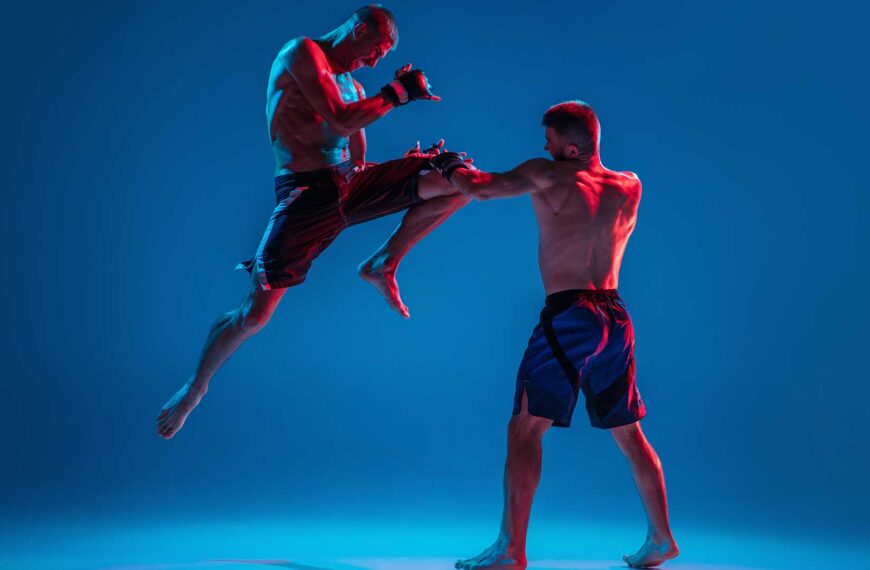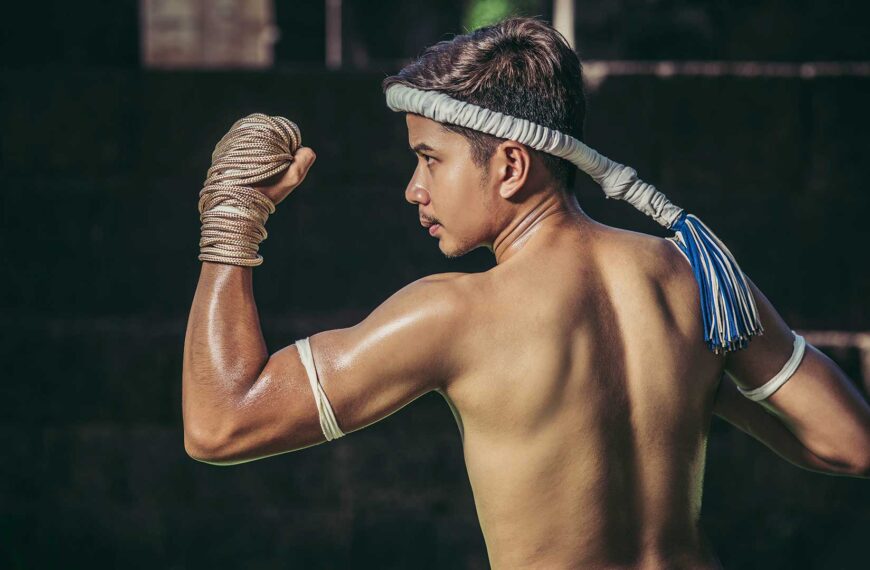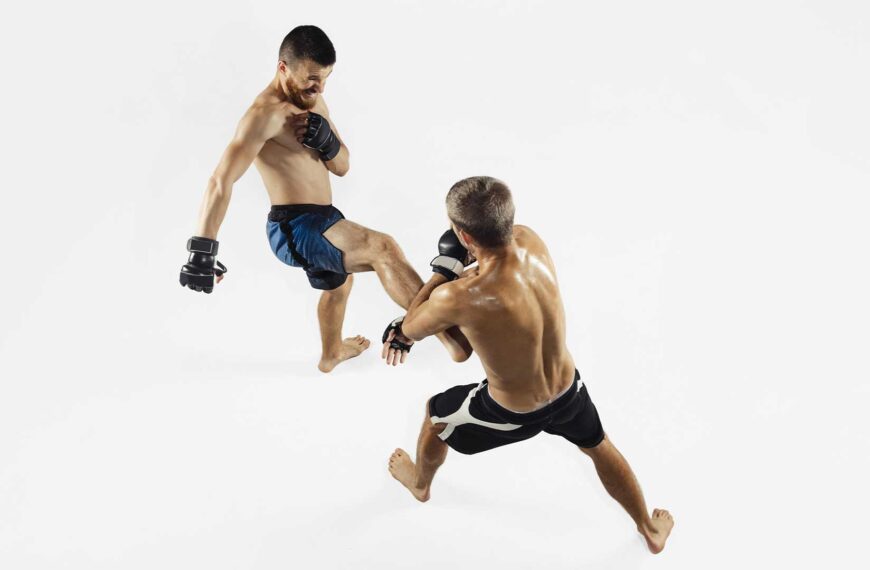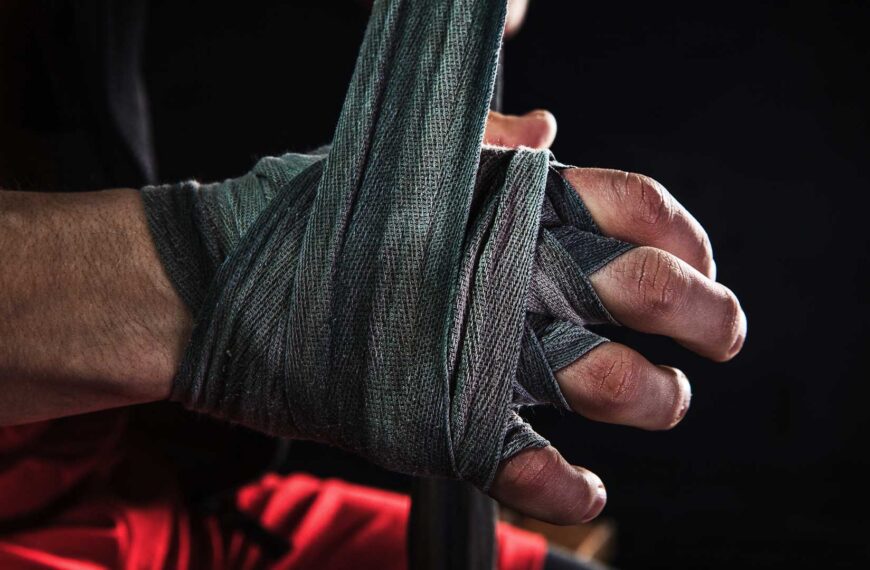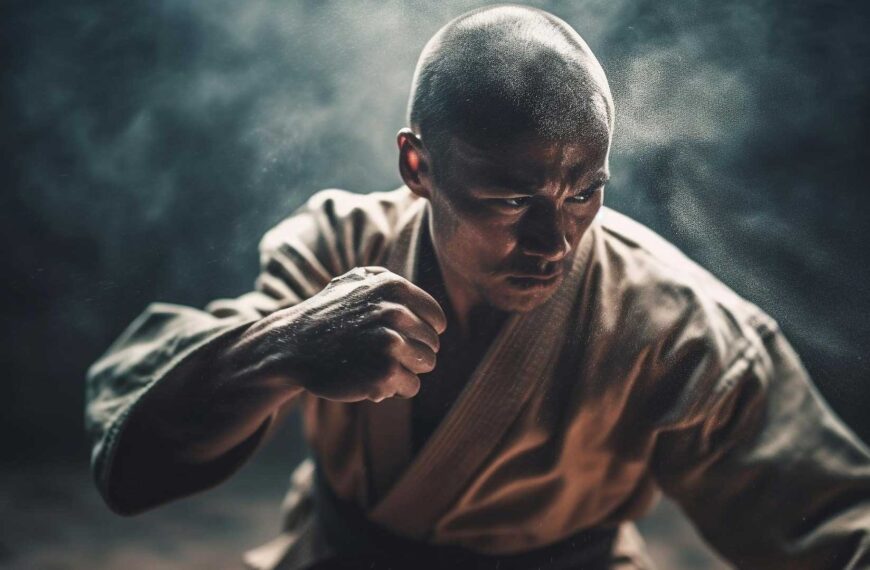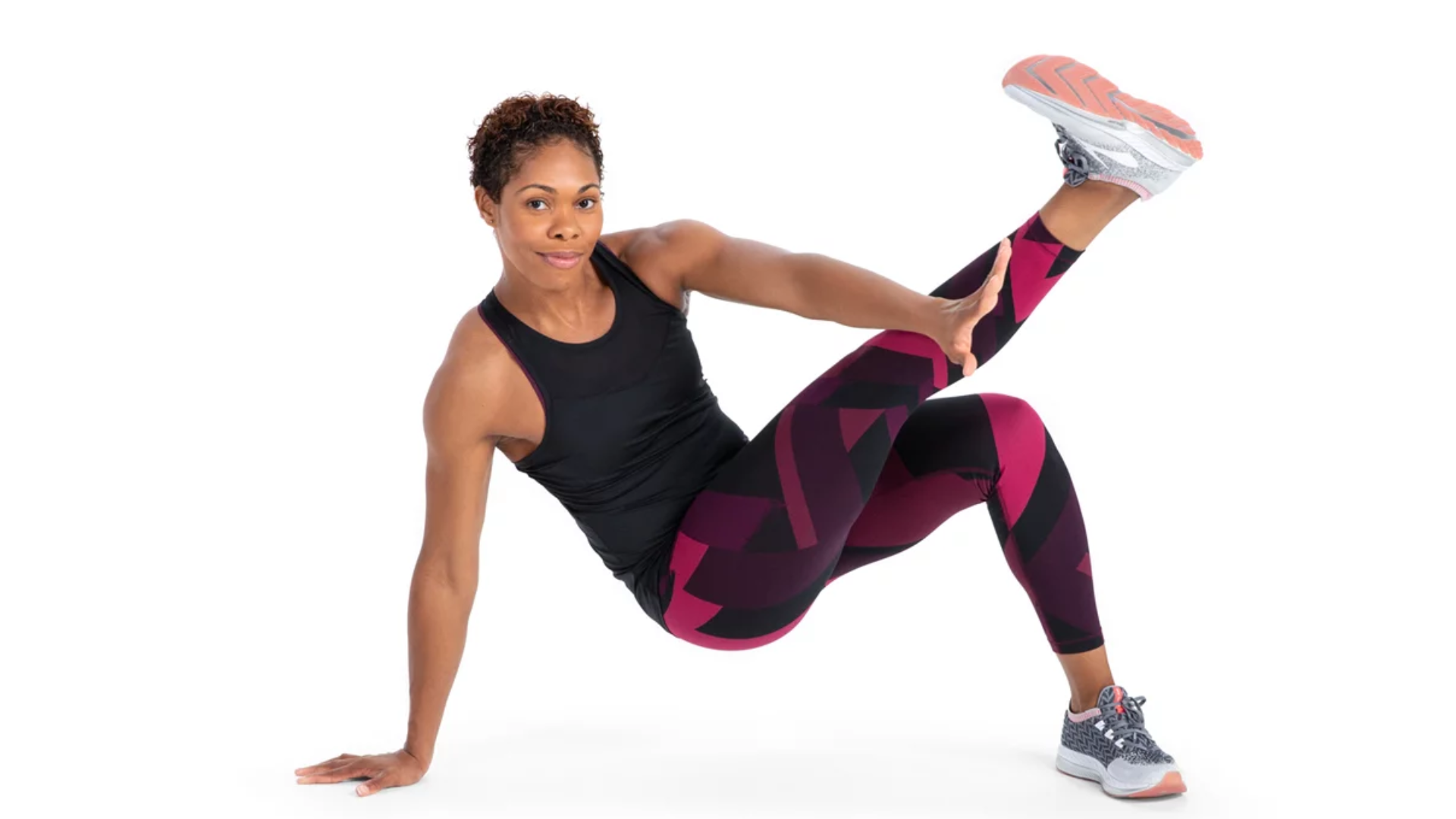Are you interested in mastering the art of Muay Thai? If so, you’re embarking on a challenging yet immensely rewarding journey. Muay Thai, also known as the “Art of Eight Limbs,” is a martial art and self-defense technique that originated in Thailand. Its effectiveness and practicality in real-life situations have made it popular worldwide. In this article, we will guide you through the steps to master Muay Thai and provide valuable insights from experienced instructors and practitioners.
What you will learn about mastering Muay Thai:
- How to find a qualified Muay Thai instructor.
- The importance of mastering the basics and developing striking techniques.
- Tips for conditioning, consistent training, sparring, and studying fights.
Finding a Qualified Muay Thai Instructor
To begin your journey in Muay Thai, it is essential to find a qualified instructor who can guide you through the learning process. Research reputable Muay Thai gyms or training centers in your area and look for experienced instructors with a strong background in Muay Thai. A qualified instructor should have a proven track record in teaching and a deep understanding of the techniques and principles of Muay Thai.
One such instructor is David Engel, a highly experienced Muay Thai instructor and self-defense trainer. In a wikiHow article, David Engel shares his insights on learning Muay Thai and provides guidance on various aspects of the art. Having a knowledgeable and skilled instructor is crucial in ensuring that you learn the correct techniques and develop a solid foundation in Muay Thai.
| Topic | Details |
|---|---|
| Elements of a qualified instructor | – Proven track record in teaching- Strong background in Muay Thai- Deep understanding of techniques and principles of Muay Thai |
| Importance of maintaining balance | – Loose fist with relaxed hand and arm- Proper body alignment and coordination in basic stances |
| Key fundamentals to practice | – Fundamental stances- Footwork- Hand positions |
| Benefits of mastering the basics | – Provides a strong foundation for further development- Improves overall technique |
Mastering the Basics
Mastering the basics is fundamental in any martial art, and Muay Thai is no exception. Before diving into complex combinations and advanced techniques, it is crucial to learn and practice the fundamental stances, footwork, and hand positions. These basics form the building blocks of your Muay Thai skills and provide a strong foundation for further development.
Keeping a loose fist, but relaxing your hand and arm slightly when not punching, is one of the basic principles of Muay Thai. This allows for fluidity and faster strikes. The wikiHow article emphasizes the importance of maintaining balance, coordination, and proper body alignment in the basic stances. Practicing these stances consistently will help you develop a solid base and improve your overall technique.
Developing Striking Techniques
Striking is a crucial aspect of Muay Thai, and mastering the various striking techniques is essential to becoming a skilled fighter. The basic strikes in Muay Thai include punches, kicks, elbows, and knees. Each strike has its own unique technique and purpose, and it is important to practice them with proper form, technique, and accuracy.
In the Evolve Daily article, a comprehensive beginner’s guide to Muay Thai, specific instructions are provided for different strikes. It covers the importance of mastering the basics and provides step-by-step guidance on executing punches, kicks, knees, and elbows effectively. The article also delves into the Muay Khao style, which focuses on knee strikes, and highlights different types of knee strikes and elbow strikes.
Conditioning and Strength Training
Muay Thai requires a high level of endurance, cardiovascular fitness, and strength. To improve your conditioning, incorporate exercises such as skipping rope, running, and shadowboxing into your training routine. These exercises help build stamina, agility, and cardiovascular fitness, which are crucial for sustained performance in Muay Thai.
Strength training is equally important in Muay Thai as it enhances your striking power and explosiveness. Incorporate exercises like weightlifting, bodyweight exercises, and resistance training to build strength in your muscles. The Evolve Daily article provides detailed information on conditioning and strength training exercises specifically tailored for Muay Thai practitioners.
Consistent Training
Consistency is key when it comes to mastering Muay Thai. Establish a regular training schedule and commit to it. Training consistently allows you to develop muscle memory, improve technique, and progress steadily. It is important to note that progress in Muay Thai is not always linear, and you may encounter plateaus along the way. However, consistent training will help you overcome these plateaus and continue to improve.
Staying motivated can sometimes be challenging, especially when faced with the physical demands of training. To stay motivated, set realistic goals, track your progress, and celebrate small achievements along the way. Surround yourself with a supportive community of fellow Muay Thai practitioners who can encourage and inspire you.
Sparring and Partner Practice
Sparring and partner practice are essential components of Muay Thai training. Controlled sparring sessions allow you to apply techniques in a realistic setting and develop timing, speed, and defensive skills. It is important to spar with partners of different skill levels to challenge yourself and learn from others. Sparring also helps you understand the practical application of techniques and builds your confidence in real-life situations.
In the Evolve Daily article, the significance of sparring is emphasized, and different types of sparring drills are discussed. The article provides valuable insights on how to make the most of your sparring sessions and highlights the importance of safety and communication with your sparring partners.
Focus on Defense and Counter Techniques
While developing your offensive skills is important, mastering defensive techniques is equally crucial in Muay Thai. Learning how to block, parry, and evade strikes effectively can protect you from your opponent’s attacks and create opportunities for counter-attacks. Defense and counter techniques are essential components of a well-rounded Muay Thai skill set.
Improving your defense requires practice and repetition. Focus on proper technique, timing, and reading your opponent’s movements. By studying their strikes, you can anticipate and neutralize their attacks more effectively. The Evolve Daily article provides valuable tips and techniques for improving your defense and counters.
Studying and Analyzing Fights
Watching professional Muay Thai fights and analyzing the techniques used by skilled fighters can greatly enhance your understanding and proficiency in the art. Observing footwork, timing, combinations, and defensive tactics can provide valuable insights and inspiration for your own training.
In addition to observing fights, it is beneficial to study breakdowns and analysis from experts in the field. They can provide in-depth explanations and strategic insights that can further enhance your understanding of Muay Thai. By applying these insights to your own training, you can refine your techniques and adapt them to different situations.
Embracing Mental Discipline
Muay Thai is not just a physical sport; it requires mental discipline and a strong mindset. Cultivating mental toughness, focus, and discipline is essential in pushing through physical and mental barriers. Developing a resilient mindset will enable you to overcome challenges, stay focused during training, and perform at your best.
In a Medium article, the author discusses the importance of mental discipline in learning Muay Thai. They explain that training consistently and pushing yourself beyond your comfort zone is key to developing mental toughness. By embracing mental discipline, you can train effectively, stay motivated, and excel in your Muay Thai journey.
Training in Thailand
For those seeking an immersive and authentic Muay Thai experience, training in Thailand is a popular option. Thailand is the birthplace of Muay Thai, and training in a traditional Muay Thai camp allows you to learn from experienced fighters and trainers. Immerse yourself in the culture, train alongside passionate practitioners, and gain valuable insights that can accelerate your progress.
The 8limbsus.com website features an article about Kumron Vaitayanon, also known as Master K. Master K is a former Muay Thai fighter and instructor who now teaches Muay Thai in New Jersey. The author of the article became Master K’s student and gained popularity on YouTube by filming their training sessions. Training with a skilled instructor like Master K can provide valuable guidance and help you apply effective techniques in the ring.
Never Stop Learning
Mastery in Muay Thai is a continuous journey. Even the most skilled fighters continue to learn and refine their techniques. It is important to stay open-minded, attend workshops, seminars, and learn from different instructors to expand your knowledge and skills.
Online resources, such as instructional videos, articles, and forums, can provide a wealth of knowledge and insights from experts in the field. The Evolve Daily article mentioned earlier is an excellent resource for beginners, but there are many other reputable sources available as well. Continuously seeking new knowledge and techniques will help
Case Study: John’s Journey to Muay Thai Mastery
John, a 25-year-old fitness enthusiast, had always been intrigued by martial arts. He wanted to challenge himself physically and mentally, and after researching different disciplines, he decided to embark on a journey to master Muay Thai.
He began his search for a qualified Muay Thai instructor and discovered a reputable gym in his area. There, he met Coach Mike, an experienced fighter with a deep passion for the sport. Coach Mike had a proven track record in teaching and was known for his ability to bring out the best in his students.
John started his training by mastering the basics. He diligently practiced stances, footwork, and hand positions, always focusing on maintaining balance and proper body alignment. Coach Mike stressed the importance of a strong foundation and John dedicated himself to perfecting the fundamentals.
As John progressed, he delved into striking techniques. He worked tirelessly on his punches, kicks, elbows, and knees, paying close attention to form, technique, and accuracy. Coach Mike provided valuable feedback and guided John in refining his striking skills.
To enhance his overall fitness, John incorporated conditioning exercises into his training routine. He skipped rope, ran, and engaged in shadowboxing, which improved his endurance and cardiovascular fitness. He also dedicated time to strength training, building power and explosiveness in his strikes.
Consistent training became John’s mantra. He established a regular schedule and remained committed to his practice. Despite facing occasional plateaus, he stayed motivated by setting small goals and celebrating each milestone along the way.
Sparring sessions and partner practice became pivotal in John’s journey. He applied his techniques in controlled sparring, developing timing, speed, and defense skills. Training with partners of different skill levels challenged him to adapt and learn from others.
Defense and counter techniques were a significant focus for John. He dedicated time to learning how to effectively block, parry, and evade strikes. Developing counter-attacks and strategies allowed him to neutralize opponents with precision.
John understood the importance of studying and analyzing fights. He watched professional Muay Thai bouts, carefully observing footwork, timing, combinations, and defensive tactics. These insights and inspiration fueled his own growth as a fighter.
Mental discipline became a cornerstone of John’s training. He cultivated mental toughness, focus, and discipline, pushing through physical and mental barriers. This mindset allowed him to overcome challenges and excel in his practice.
Though John had not yet had the opportunity to train in Thailand, he aspired to do so. He recognized the benefits of immersing himself in the culture, training with experienced fighters, and learning from authentic Muay Thai trainers.
Throughout his journey, John embraced the idea that mastery in Muay Thai is a lifelong pursuit. He remained open-minded, attending workshops, seminars, and learning from different instructors to expand his knowledge and skills.
John’s dedication, patience, and persistence paid off as he continued to progress in his Muay Thai journey. He not only experienced improved fitness and self-confidence but also developed a deep appreciation for the art and discipline of Muay Thai. Through his commitment to mastering the techniques and embracing the mental and physical challenges, John became a skilled fighter, inspiring others to embark on their own paths to Muay Thai mastery.
